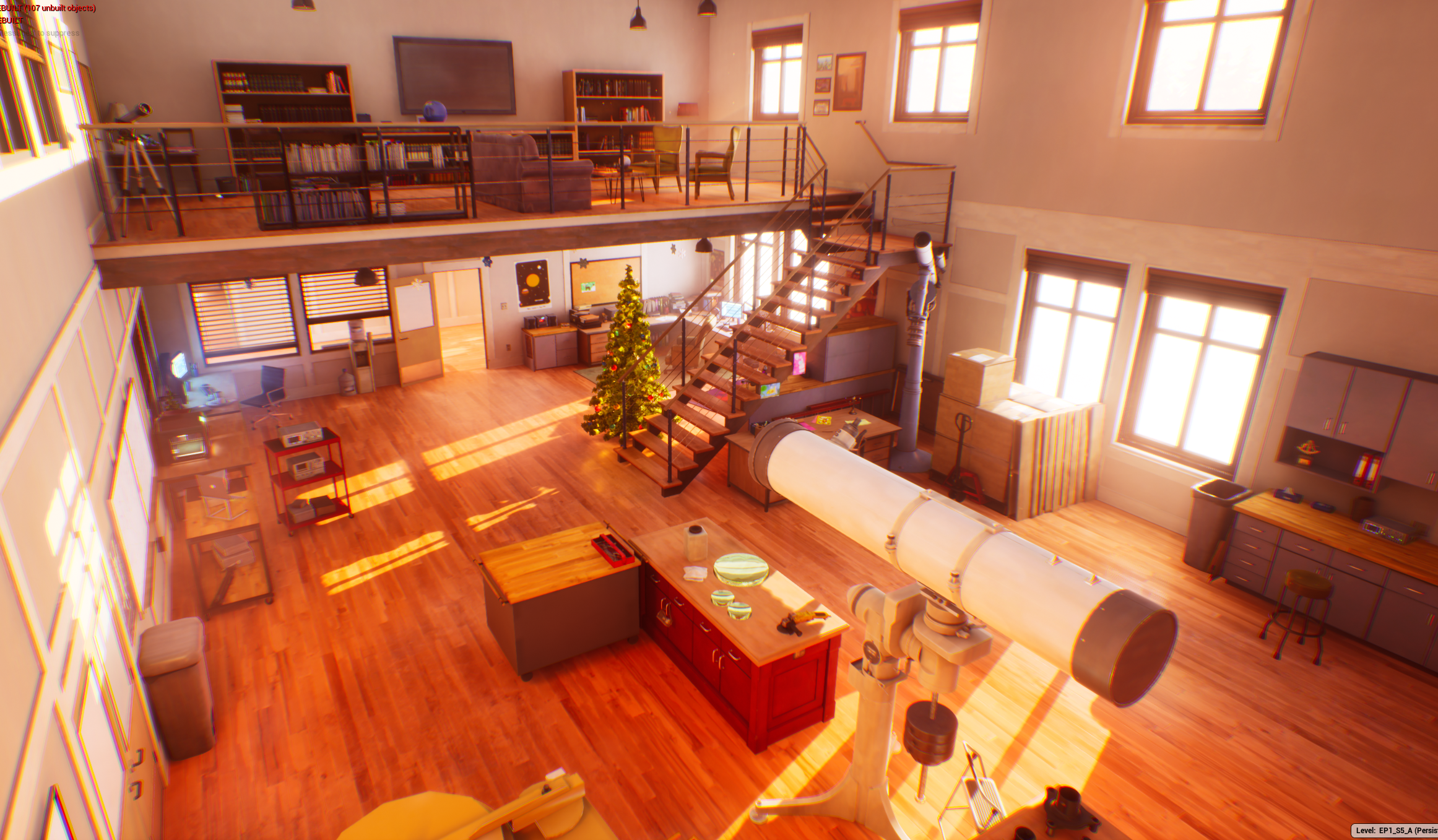Life is Strange: Double Exposure
Life is Strange: Double Exposure is a narrative adventure game that I worked on while at Deck Nine Games as a level designer. My responsibilities included importing scenes into Unreal 5 from our proprietary scriptwriting tool Playwrite, setting up and fixing logic for levels in our cinematics editor Storyteller, implementing interactable objects and tweaking them for the smoothest user experience.
Though at this point I had already shipped a Life is Strange game with Deck Nine, Double Exposure’s development brought new challenges. Navigating an ever-changing team and an upgrade from UE4 to UE5, I frequently had to come up with ad-hoc solutions during preproduction in order to help move the game along.
First Playable
For a while, I was the sole level designer on the entire team, and the only one that had carried over from True Colors. Because of this, I took ownership over our first playable scene, which involved the player sneaking into the office of a character named Moses.
In addition to my usual responsibilities, we decided to port our project to Unreal Engine 5 in the middle of this process. On top of placing interactables and collaborating with narrative, I had to use level Blueprints, which we didn’t usually use in our pipeline, to prototype the scene logic. Then, when our tools were ready to work with the new engine, I took charge in replacing my scripting with proper implementation.
A Matter of Stealth
During preproduction, we ended up starting our first playable scene over from scratch. One of the big changes that this brought was having Detective Alderman, a police officer, actually enter the scene and serve as an obstacle. Having had prior experience with creating levels for stealth, I volunteered to helm the design of this encounter.
Given that this was the first instance of stealth in a non-stealth game, I opted to keep it simple; I designed patrol paths to leave obvious safe spots for the player to move between, and slowly ramped up the difficulty over three short encounters by lengthening the distance. Though this was the only stealth sequence that shipped, I felt that we established clear player expectations for sneaking.
Documentation
Because I was the only level designer who carried over from the last game, a lot of people came to me for help with learning our proprietary tools. While I was happy to help, this clearly indicated a problem: our Bus Factor was quite low.
I spent a fair amount of time writing down all the little subtleties about our interactable objects, or “hotspots”, I had learned from True Colors, trying to distill what made for the smoothest player experience into words. For scene imports, our most complicated task, I recorded and edited a video tutorial. These provided resources that other designers on the team could learn from, including my own leads!









